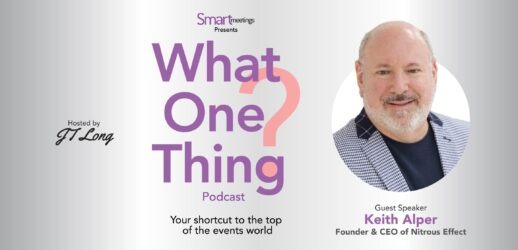The toll worry takes has never been more clear
Long before “SNL,” there was MAD magazine. And its iconic cover boy, Alfred E. Neuman, whose motto was: “What, me worry?”
MAD faded into the mists, but we need Alfred E. Neuman’s outlook on life now more than ever. According to medical experts, the toll worry takes can include feeling exhausted, difficulty concentrating and making decisions, bad sleep, headaches, irritability and nausea.
Not surprisingly, it also often spikes levels of our stress hormone, cortisol, which can lead to its own litany of unpleasant symptoms: constipation, bloating, diarrhea, weight gain, higher blood pressure, low libido and irregularities with ovulation and menstrual periods.
“Wait, this makes me even more worried!” I can hear you thinking. And that’s the trouble, isn’t it? There seems to be so much more to be worried about these days. Professionally (the last two-and-a-half years, ugh!), personally (hopefully not). All to the backdrop of a world seemingly going to Hades in a handbasket faster than ever.
Read More: Well-being is Where It’s At
“Eliminating worry from your life altogether is nearly impossible, not to mention unnecessary since worry can be helpful in motivating you,” says Emily Holland on Chopra, the website for the wellness organization led by Dr. Deepak Chopra. In other words, creating your to-do lists and mother-henning each item to completion may inevitably require varying degrees of concern—i.e., worry—but that’s what motivates us to create Plan Bs. That’s good, short of losing sleep or feeling other adverse symptoms of worry.
The Road to Less Worry
Avoiding those symptoms starts with reminding ourselves we can’t predict the future. Your mind hates uncertainty, yet think of all the times you’ve been surprised by how things really work out. We truly never know, so to the extent you are derailed by the might-bes and could-bes, you aren’t doing your best work in the here and now.
Being more mindful of when and how you worry is another solid step. “Unless you’re able to observe and acknowledge your tendency to worry, it will be harder to stop,” Holland notes. “If worry is your automatic response to adversity, uncertainty or general life changes—and has been for some time—it may take some time to break the habit. Becoming aware of your reactions is a good first step. When you practice mindfulness, you become increasingly better at recognizing thought patterns, including those that do you a disservice.”
“To the extent you are derailed by the might-bes and could-bes, you aren’t doing your best work in the here and now.”
A trick I’ve often used to solve a worrisome problem is to trust my subconscious mind. Instead of losing sleep, I tell myself a solution will present itself in the morning. Setting the intention seems to be the key, for more often than not, what seemed too overwhelming to work out the day before presents itself as an “ah hah!” moment the next day. Holland suggests a related tactic: Instead of getting bogged down fretting over something, grab a notepad and write down the problem. Then get back to productive work with comfort in knowing the problem won’t be ignored or forgotten.
“Your brain typically has a harder time conjuring up solid solutions when it’s stressed and under pressure,” Holland says. “Try tackling your ‘worry list’ after you’ve done something enjoyable, even if it’s simply going out for a coffee.”
Veteran meeting profs know you have to sweat the right stuff. You can’t worry about whether your outdoor event will be assailed by a plague of locusts, but you can have a contingency plan for moving it indoors. In other words, it’s important to remind yourself of the things you can control and those you can’t. You’re wasting time and energy stressing over things on the “can’t control” side of the ledger. Instead, creating an action plan for addressing the manageable issues “allows you to feel more in charge and to worry less,” as Holland puts it.
No Worries
A confession: I used to subscribe to the school of thought that you needed to assume the worst would happen. That way, you’re never surprised or disappointed if it does. But that outlook takes a toll. It’s all worry, worry, worry. After years of stomach churning, I finally realized one day I needed to change. I needed more joy, not more tsouris (a fine Yiddish word meaning heartburn resulting from a stressful situation).
Read More: 5 Major Wellness Trends for Meeting Planners to Know Now
So now I make a conscious effort to stop worrying so much, to accept that you win some and lose some. To trip the light fantastic whenever I can and laugh more. And in the process I’ve learned something I’ve since read is borne out by scientific research. Singer-songwriter Bobby McFerrin hit it on the head when he wrote this prescription for a more rewarding life: “Don’t worry, be happy.”
Smile Your Worries Away
One smile can make you feel happier than 2,000 bars of chocolate! (Who would be happy, though, if forced to eat that much chocolate?) British researchers made that discovery, says Ron Gutman in Smile: The Astonishing Powers of a Simple Act.
Even more amazingly, this happiness can be self-inflicted.
The facial feedback hypothesis has been around a long time. In the 1800s psychologist William James posited that our emotions are based on bodily experiences, and Charles Darwin studied how animals reacted to facial expressions. Subsequent studies have shown that our own smiles, in particular, can make us feel happy—even if we were feeling worried or sad before.
Jaime Pfeffer, a Florida success coach, recommends smiling to all her clients, according to NBC News, particularly to those dealing with long days or tedious work. “One of my clients last week told me smiling for 30 seconds at a time a few times per day helps him stay upbeat when doing sales calls. He said the task can get old after a while, but the smiling helps him stay more energized and avoid burnout.”
How do smiles have this seemingly magical ability to lift moods? They induce release of hormones like dopamine and serotonin in the brain. As Dr. Isha Gupta, a neurologist at IGEA Brain, Spine and Orthopedics in New Jersey, told NBC, “Dopamine increases our feelings of happiness. Serotonin release is associated with reduced stress.”
Even forcing a fake smile can reduce stress and lower your heart rate, according to Dr. Sivan Finkel, a New York City cosmetic dentist. He cites a Welsh study that found that people who could not frown due to botox injections were happier on average than those who could frown.
So, smile!
This article appears in the August 2022 issue. You can subscribe to the magazine here.




